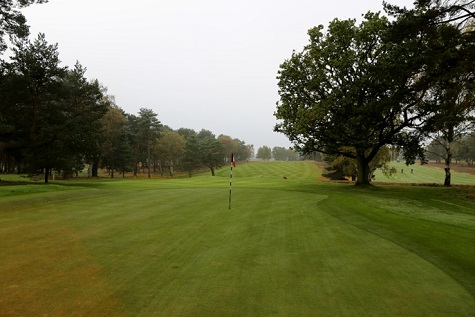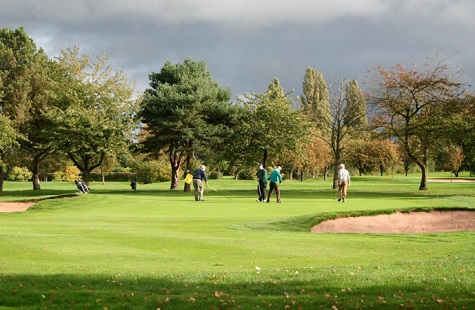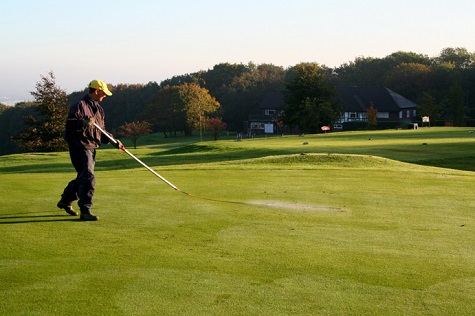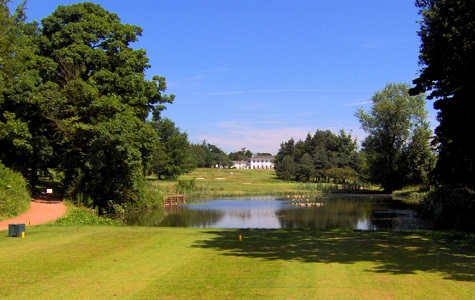A couple of years ago I wrote an article on the current state of golf after having the pleasure of visiting Wentworth GC and seeing the investment they commit to ensuring the course under the stewardship of Kenny McKay remains one of the best golf courses to play.
I was in awe of the level of greenkeeping skills and attention to detail by the greenkeeping team to ensure this course maintains its status as one of the best golf courses in the world.

Two years on, and particularly after this terrible Covid pandemic, golf seems to be as popular as ever. Golf was in fact, one of the first sports allowed to continue under some of the Covid restrictions. Many courses opened with limited rounds of golf being played, In essence a lifeline for many golf courses.
However, with restrictions finally now lifted on July 19th we should now hope all golf courses will be back to near normality and start seeing the return of some much-needed income generation from both golf and social events for the rest of the calendar year.
It certainly has been a tough couple of years for greenkeeping staff who have been working hard throughout the pandemic, either at full or reduced capacities. Either way it has no doubt been a testing and often stressful time for many.

Like any business which has to adapt to survive, golf courses are no different. Personally, I place a high regard for what golf courses have to offer, not only providing a changing game of golf, but the shear value of the benefits they can bring to wider community and local fauna, flora and wildlife.
Every golf course should aim to maintain a high standard of playing surfaces. The reputation of the golf course is usually determined by its playing experience. All too often in recent years we have seen golf courses reduce their budgets and resources on the maintenance of the course - which over time sees a decline in course quality.
You cannot put a value on what a golf course can offer to the wider community. There is so much potential for these clubs to further embrace and work more closely with their communities to attract new business opportunities to supplement their main golfing income.
However, I do have some concerns about the number of greenkeepers leaving the industry, fed up with the constant battering they get from course members and greens committees. Many of whom do not have a clue or understand the requirements, skills, education and dedication to the job of looking after a golf course.

It has been a bone of contention for many years, but even with better communication channels and the fact that many head greenkeepers and course managers have a good dialog with their employers, there is still a lot of tension and issues spilling into the welfare of the greenkeeping staff in terms of how they are treated by members.
Constant criticism does not help anybody. Often part of the problem is the expectations of the members, who demand their course look the same as Wentworth or any other topflight golfing venue. They are not content with the fact that their own golf course is unique and can only compete with the top courses with increased investment - which many clubs do not have.
With most eighteen-hole golf clubs running on staffing levels of five or less they are really never going to compete with clubs who employ between 7 -10 members of staff. Trying to deliver the expectations of the members with a team of five staff is always going to be a tall order.

The only way they would be able to compete will be investing in a lot of time and labour saving machinery and equipment to cover the ground more efficiently. However, it is really about the detail and polish you can deliver over and above the basic maintenance techniques that often makes the difference.
So the question I am asking is what should the staffing level of a typical 18 hole golf course be? I firmly believe we should have at least 7 full time employees to deliver a decent level golfing expectation and experience. Ultimately the reputation of the golf course is usually down to the condition, playability and presentation of the course. This can only be achieved by investing in the right number of staff and investing in the relevant machinery and resources they need to deliver the club’s expectations.

As mentioned in recent blogs, we the turf grass industry are facing a crisis in recruitment with many golf course managers finding it difficult to attract new members of staff - especially well qualified experienced staff. There seems to be a void in the market at this present time.
I again have written about this subject in a previous articles in TurfPro called the Next Generation which was followed by an article called A Groundsman’s Lot that talked about the fact that many of our practicing groundsmen and greenkeepers are undervalued.
The problem of recruitment in the golf industry I put down to several factors - pay and conditions, the fact they need to work weekends and evenings and their prospects of promotion is limited. They can probably earn more driving a white van and quite frankly do not see working in the turf industry as a glamourous job.
I would like to see a national campaign run by BIGGA to attract and entice new blood into our industry. We need to go into schools and colleges and explain the opportunities to be had by working in this unique turf grass industry.
However also, I think many, golf courses need to look at themselves more closely and start working with the golf governing bodies to ensure they are positively trying to provide a pleasant and well rewarded place of work for the next generation of greenkeepers.

There are still too many golf clubs, not investing anywhere near enough funding in the greenkeeping facilities, namely their sheds and messroom facilities. Many are still often poor and run down and not fit for purpose. The question the club secretary, treasurer or indeed the chairman of the club, should be asking themselves is would he or she be happy having to use the facilities they currently provide?
It is time clubs changed their mentality towards their staff and start treating them with respect and reward them for their loyalty and commitment. The future of any golf course is in the investment of good staff and facilities.
I passionately believe the tide is turning and golf courses now have a brighter future ahead of them - especially if they continue in investing and supporting their dedicated greenkeeping teams who work tirelessly to maintain these unique land assets for future generations.